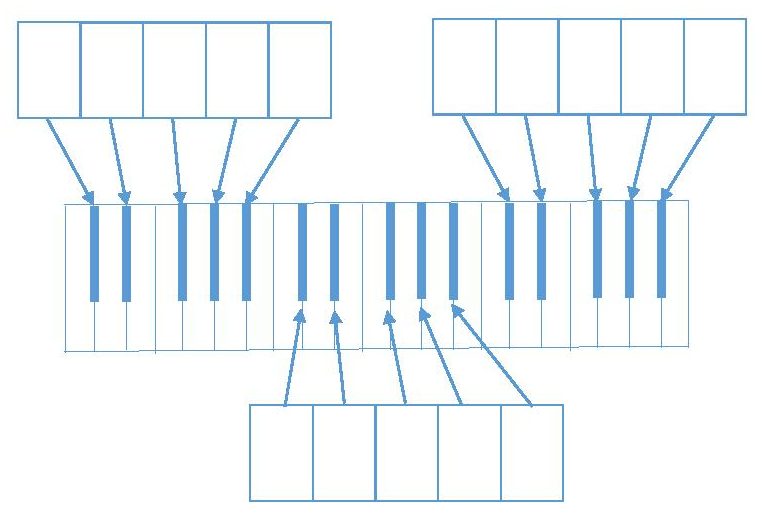NAMING the BLACK KEYS on PIANO
First, let’s review the white notes on the piano keyboard. Take a look at this diagram from the last lesson and make sure you’re confident of the white note names.

Got it? OK, let’s talk about the black keys. Again, notice the repeating visual pattern of the black keys as you go left to right on the diagram. First, there is a set of 2 black keys with the white key D between the pair. After a pair of adjacent white keys (E & F), there is a set of 3 black keys alternating with the white keys G & A. Then another pair of adjacent white keys (B & C).
The pattern then repeats, starting again with the set of 2 black keys, a pair of adjacent white keys (E & F), a set of 3 black keys, and finally a pair of adjacent white keys (B & C). This pattern runs across the width of whatever keyboard you have.
So far, so good. Now for the names. I think this is where alot of folks get confused.
Any one black key has two possible names, a sharp name (symbol #) and a flat name (symbol b). How’s THAT for confusing? Let me say that again; any one black key has two possible names, a sharp name and a flat name.
Having dropped that bomb on you, let me try and clarify it for you. Notice there is a black key between C and D. Since the black key is to the right of the C, its sharp name will be C#. All black keys adjacent to C and on the right side of C can be called C#. In general, move right from a particular note, add ‘#’ to the name of that note.
Since that same black key is to the left of the D, its flat name will be Db. All black keys adjacent to D and on the left side of D can be called Db. In general, move left from a particular note, add ‘b’ to the name of that note.
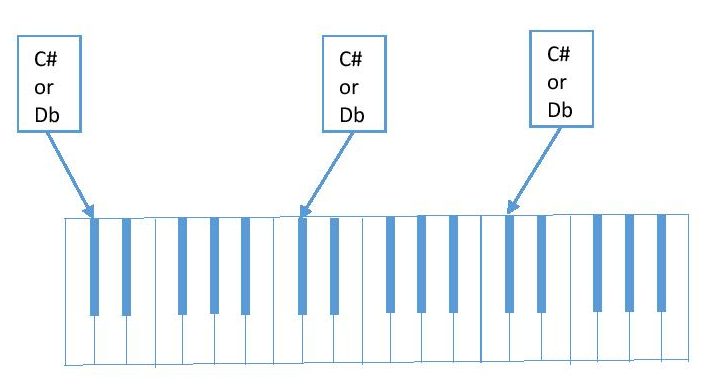
Remember, the name C# and the name Db refer to one and the same note. Which name you use will depend on the musical context; I will deal with that question in a later lesson. For now, let’s just get solid on what each black note might be called.
Let’s name another black key. Consider the left-most of the set of 3 black keys.
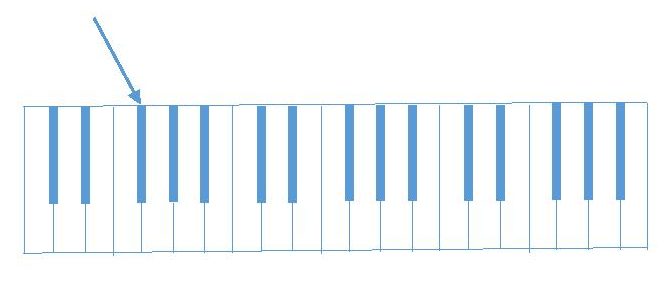
This black key is immediately to the right of F so its sharp name will be F#. It is immediately to the left of G so its flat name will be Gb.
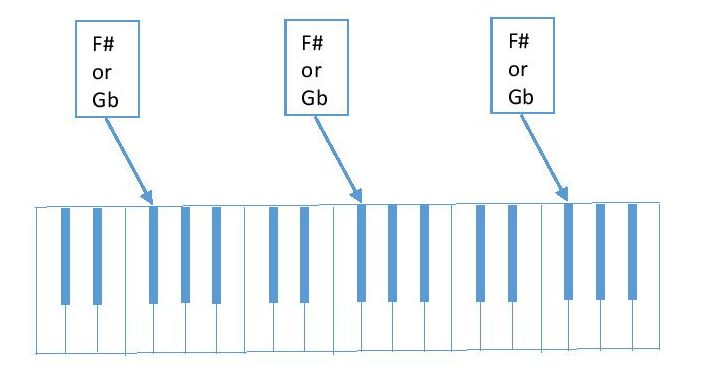
The short version of this pattern is ‘Move left from a note, add b to its name; move right, add # to its name’. Extending this pattern to all the black keys, here is the complete set of names.
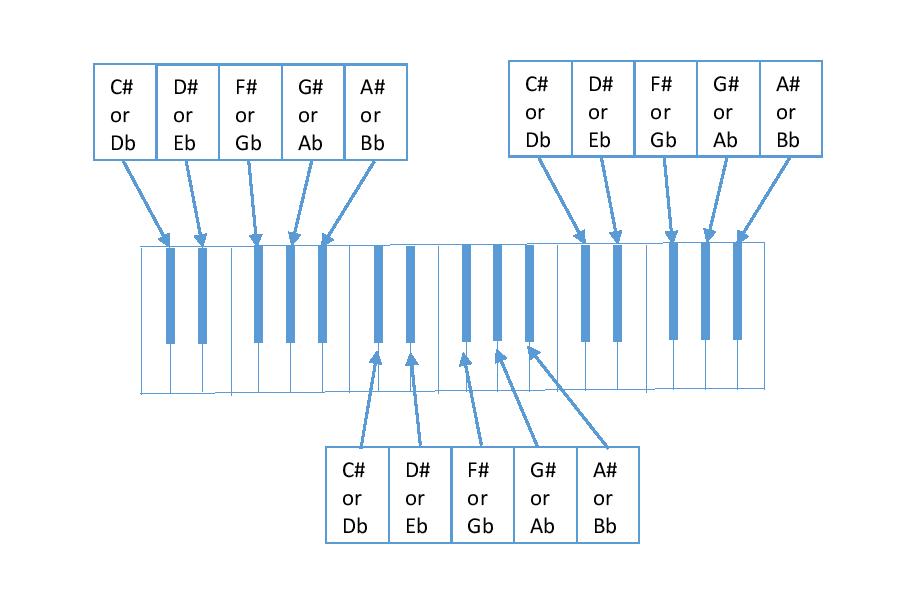 If you want a hardcopy of this lesson, you can find a PDF here: Naming the Black Notes on the Piano.
If you want a hardcopy of this lesson, you can find a PDF here: Naming the Black Notes on the Piano.
To test your understanding of this pattern, fill in this blank chart. Don’t peek!
